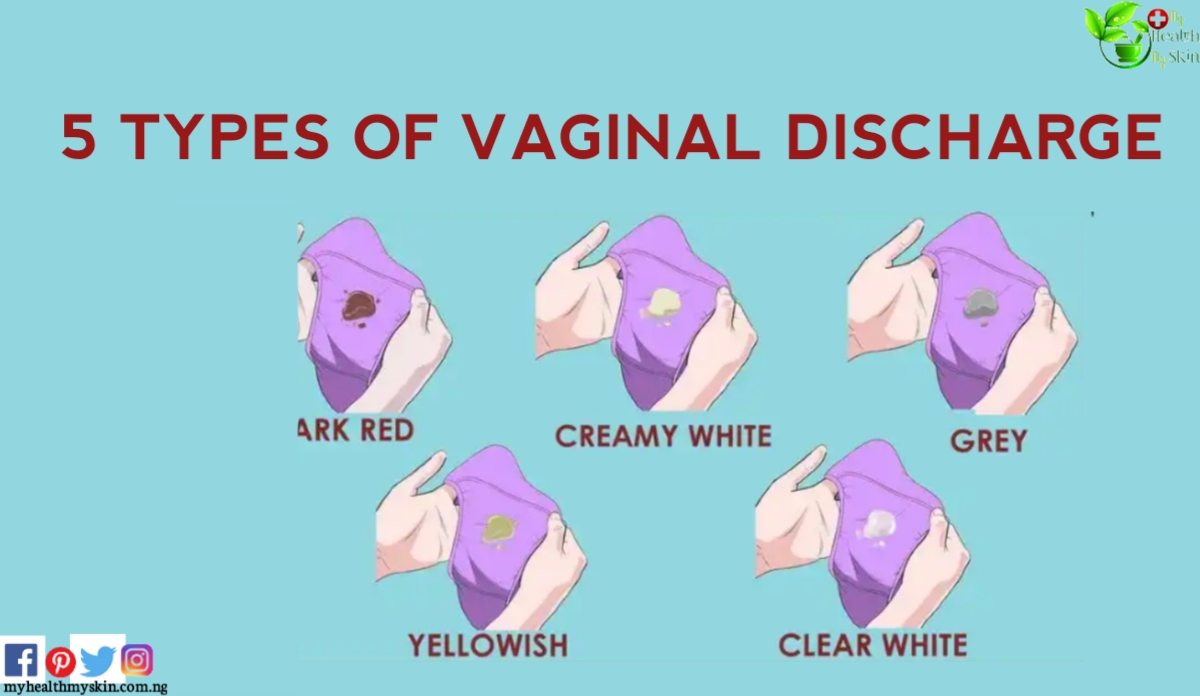When the vaginal discharge has some color, smell, thicker consistency or is different from the usual, it may indicate the presence of a vaginal infection such as candidiasis or trichomoniasis or the presence of a sexually transmitted disease such as gonorrhea.
Therefore, when the vaginal discharge is not a transparent secretion and has a white, yellow, green, pink or brown color, it can indicate different problems such as vaginal infections, for example, it is important to consult a gynecologist to treat the problem.
Therefore, it is important to know what each color of vaginal discharge can mean, in order to understand when it is necessary to see the doctor or gynecologist.
So, here are some tips on what each of the main types of vaginal discharge can mean:
[lwptoc]
Types of vaginal discharge

1. White discharge
The thick white discharge, like curdled milk, is usually accompanied by other symptoms such as itching, redness, and a burning sensation in the vulva and vagina.
What it can cause: Candidiasis vaginal skin, an infection in the vagina caused by the fungus Candida albicans can be caused.
How to treat: the treatment is usually done with antifungal remedies such as Fluconazole, which can be taken in the form of pills or applied to the region to be treated in the form of an ointment.
When there is white discharge, similar to milk, homogeneous and fishy smell, it can be colpitis, a vaginosis caused by protozoa, fungi or bacteria.
2. Yellow or Greenish-yellow discharge
A yellow, grayish, or greenish-yellow discharge with a strong fishy smell that may be associated with other symptoms such as pain and burning sensation during intimate intercourse or when urinating.
What it can cause: It can be caused by Trichomoniasis, a vaginal infection that is sexually transmitted.
How to treat: The treatment is usually made with antimicrobial drugs such as Metronidazole, Tioconazole or Secnidazole, which can be taken in the form of tablets in a single dose or during 5 to 7 days of treatment.
Also, the yellow, pus-like discharge can indicate the presence of Chlamydia, a sexually transmitted disease that may cause almost no symptoms.
In this case, the treatment is done with Azithromycin, taken in a single dose or during 7 to 15 days of treatment. When the discharge is greenish, it may be a sign of Trichomoniasis or Vulvovaginitis.
3. Brown or bloody discharge
A brown discharge or the presence of blood in the discharge is usually associated with other symptoms such as pain and burning when urinating.
What it can cause: It can be caused by Gonorrhea, a sexually transmitted disease caused by bacteria.
How to treat: the treatment can be done with antibiotic medicines such as Azithromycin or Ciprofloxacin, taken in a single dose or during 7 to 10 days of treatment.
In addition, in more severe cases this type of discharge can also be signs of cancer of the vagina, cervix or endometrium, so it is important to consult a gynecologist when symptoms appear.
However, if you have had your period recently, a brown, bloody or pink discharge is common in the days following the end of your period and in these cases it is not a cause for concern.
4. Pinkish discharge
The pinkish discharge can indicate the beginning of pregnancy, as it can be caused by the fertilization of the egg and it often occurs up to 3 days after intimate contact. Along with this type of discharge, it is common to have mild abdominal cramps that are normal and go untreated.
5. Transparent discharge
The liquid and transparent discharge, similar to egg whites, can indicate that you are in the fertile period of the menstrual cycle, which is why this is the ideal time for a woman to become pregnant if she is not under the influence of contraceptives.
This type of discharge lasts approximately 6 days and eventually disappears naturally after this time.
Is it possible to have a discharge during pregnancy?
The discharge in pregnancy when it arises is important to be treated as soon as possible, as to prevent complications and avoid harming the baby.
What it can cause: It can be caused by diseases such as Trichomoniasis, Bacterial Vaginosis, Gonorrhea or even Candidiasis for example.
How to treat: the treatment must be done with medicines such as antifungals or antibiotics, for example, prescribed by the doctor.
Thus, during pregnancy, as soon as the first symptoms appear, it is very important to consult the doctor so that he can diagnose the cause and indicate the most appropriate treatment.
What to do to not have a discharge
To avoid infections and vaginal diseases that can cause a discharge, it is important to have good intimate hygiene daily, 1 to 2 times a day.
For this, you should always wash the intimate area with plenty of water and a drop of soap, never rubbing too much. After washing, you should carefully dry the intimate area and wear washed panties.
You May Also be interested in:
Watery Discharge Feels Like I Peed Myself: 6 Main Causes And All You Need To Know
5 Remedies For Each Type Of Vaginal Discharge
Normal And Abnormal Discharge In Women & Girls
Why Vaginal Discharge Smells Like Dead Animal? – 8 Causes and Treatments
Could The White Discharge Be A Sign Of Pregnancy? Check All Details Here!
That’s why it’s important:
- Wear cotton panties;
- Do not use daily protector like Carefree for example;
- Avoid using moistened wipes or perfumed toilet paper;
- Avoid rubbing the intimate area too much, even with intimate soap.
These precautions help to prevent the emergence of vaginal infections and protect the vaginal mucosa, thus preventing the development of fungi or bacteria that can cause any type of discharge.
In any case, if it happens that you are experiencing any of this uncomfortable discharges, consult your doctor.
If you want to read more articles similar to What Does Each Color Of Vaginal Discharge Mean? 5 Types of vaginal discharge, we recommend you visit our Women’s Health category. Share on your social networks and stay tuned for upcoming articles.







